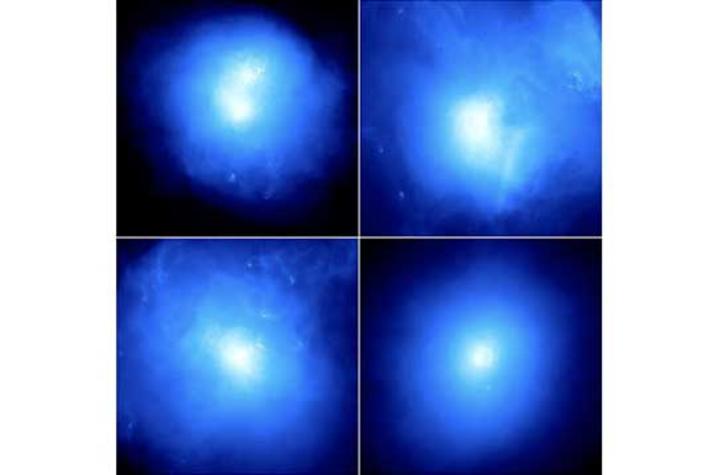UK Physics, Engineering Team Uses AI to Study Galaxy Clusters

Yuanyuan Su, an assistant professor in the University of Kentucky College of Arts and Sciences' Department of Physics and Astronomy, is finding new ways to analyze images of our universe.
“There are two milestones in the history of modern astronomy,” Su said. “The first was to put cameras on telescopes. Instead of sketching them, we can now take pictures of celestial objects. Astronomy thus develops from being subjective to objective. The second was to put telescopes in space, allowing us to look at the high energy (X-ray and gamma ray) part of the universe. We can understand the physics behind astronomical phenomena with their high energy properties. Astronomy becomes astrophysics.”
Su and her team are now helping to achieve another milestone in modern astronomy.
“AI-based techniques are being applied to fully utilize the large astronomy datasets from the ongoing and future multi-wavelength surveys,” she said.
Su studies the hot plasma spaces in between galaxies, called the intracluster medium, using space X-ray telescopes. She is collaborating with Nathan Jacobs, Yu Zhang and Gongbo Liang at the Department of Computer Science in the UK College of Engineering to find a way of using techniques from machine learning and computer vision — to analyze astronomy images.
This project stems from Su’s primary research, which is the study of galaxy clusters.
“Galaxies in our universe do not distribute uniformly in space,” Su said. “They tend to be clustered together. Clusters of galaxies are the largest and most massive gravitationally bound objects in the universe. The study of galaxy clusters has impacts on cosmology and many aspects of astrophysics.”
The team has used a deep neural network to extract information on the population and evolution of galaxy clusters from their X-ray images, which yield results superior to using conventional approaches.
The algorithm is run on high-performance computing clusters operated by the Center for Computational Sciences at UK.
“Such neural networks were originally developed for classifying consumer photographs based on their image content,” said Jacobs, who is an associate professor of computer science and director of the Multimodal Vision Research Laboratory. “I find it exciting to adapt these techniques to address practical problems and basic scientific questions.”
“I am glad I can apply my knowledge about deep learning in the astrophysics domain,” said Liang, who is a doctoral candidate in the Department of Computer Science. “I really enjoy this project, and I become more and more interested in astronomy and cosmology.”
Their work was published this week by the Monthly Notices of the Royal Astronomical Society.
Su came to UK last year, after serving as a postdoctoral fellow at the Harvard-Smithsonian Center for Astrophysics.
"My office (at Harvard) was next to ‘the great refractor,’ probably the first telescope that took photographs,” Su said. “Annie Jump Cannon, and many other women astronomers, used it to classify the stars."
Su became interested in astrophysics at a young age. However, her path to becoming an astrophysicist wasn’t always smooth.
“When I was in school, it wasn’t considered an ideal path for girls to study physics,” Su said. “I felt isolated and doubted my choice when I became the only female physics major in my class. But I was fortunate to get to know great women scientists in my career. I have been deeply influenced and encouraged by them.”
Over the last two years, Su has become not only a professor, but a mother as well.
“I want to be a female role model for my students and my baby girl,” Su said. “I am so glad to be at UK. I am grateful for talented colleagues, hard-working students, and I found my collaborators.”
More from this series Research Support
Credits
Hannah Edelen and Jenny Wells-Hosley (Public Relations and Strategic Communications)



